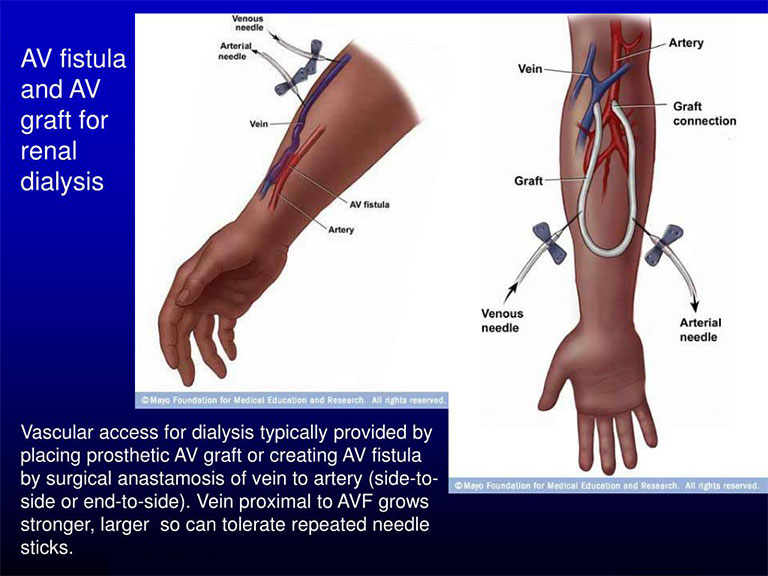
Dialysis Access Procedures
Vascular Wellness Center provides an array of dialysis access procedures designed to meet each patient’s individual medical needs. For details on these procedures, explore the options below.
AV Fistula Creation & Graft Surgery
Arteriovenous (AV) fistula and graft surgeries are procedures designed to establish a connection between an artery and a vein for hemodialysis. The choice of procedure depends on the patient's specific anatomy and medical requirements.

AV Graft Surgery:
- A surgeon creates the connection between an artery and a vein using a synthetic or biologic graft.
- Local anesthesia is administered to numb the area during the procedure.
- The graft is typically ready for hemodialysis use within a few weeks.
- Grafts are often the preferred option when an AV fistula is not feasible or has previously failed.
Endo AV Fistula Creation
An arteriovenous fistula (AVF) may be created in the wrist, forearm, inner elbow, or upper arm. This can be done through open surgery (surgical AVF) or a minimally invasive procedure (EndoAVF). For instance, a WavelinQ™ EndoAVF is typically placed in the upper forearm and can work for many years, though the time it takes to mature varies. Two slim devices are used to connect the vein and artery without open surgery; magnets align these devices, and once the connection is established, they are removed. This approach results in minimal or no scarring and no need for stitches.
Dialysis Angioplasty/Stent
To ensure a patient’s hemodialysis functions properly, vascular access must remain open. A fistulagram is an endovascular procedure that uses contrast dye to identify problems in a fistula. If a blockage is found, an angioplasty can be performed with a balloon catheter to widen the narrowed segment and restore circulation. If the vessel walls are too weak, a wire mesh stent may be placed to support them. In cases where the narrowing of the vessels limits blood flow, a surgical graft might be necessary to re-establish adequate circulation.
